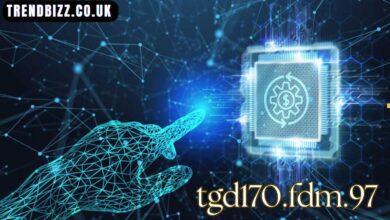Public Relations 3.0, ??, The Future of Strategic Communication in a Digital Age

Introduction to Public Relations 3.0
The evolution of public relations has come a long way from press releases and newsroom handshakes. With the advent of the digital age, we witnessed a major shift from traditional strategies to digital storytelling, influencer partnerships, and real-time engagement. Now, we are entering a new era known as Public Relations 3.0, which not only integrates cutting-edge technology but also transforms how brands build trust, loyalty, and relevance with their audiences. But what exactly is public relations 3.0 and why does it matter now more than ever?
The Evolution: From PR 1.0 to Public Relations 3.0

To understand public relations 3.0, it’s important to trace how the discipline has evolved over the years:
- PR 1.0 was primarily about media relations, where the goal was to get newspaper or broadcast coverage. Press releases and face-to-face networking were central tools.
- PR 2.0 embraced digital platforms and the rise of social media, where brands began communicating directly with consumers.
- Public Relations 3.0, however, is about deep personalization, AI integration, immersive experiences, and real-time data-driven strategies. It’s no longer just about reaching people; it’s about understanding and co-creating with them.
This shift reflects the transformation of audiences into participants, not just passive consumers of information.
The Defining Features of Public Relations 3.0

So, what defines public relations 3.0? Here are the core features:
1. Hyper-Personalization and AI
PR 3.0 uses machine learning and AI to tailor content for individuals or micro-audiences. PR professionals now rely on smart data to create highly personalized communication that is timely and relevant.
2. Two-Way Real-Time Engagement
No longer do PR teams push messages in a one-directional flow. With platforms like X (formerly Twitter), TikTok, or Threads, real-time feedback loops are created, and brands must respond instantly, shaping public opinion as events unfold.
3. Mixed Reality and Immersive Storytelling
With the integration of AR (Augmented Reality), VR (Virtual Reality), and XR (Extended Reality), companies are now telling brand stories through immersive experiences. Think virtual product launches, 360-degree corporate tours, or interactive infographics.
4. Blockchain for PR Integrity
In an age of misinformation, public relations 3.0 embraces blockchain to verify sources, track data origins, and maintain transparency in crisis communications.
5. Influence through Community, Not Just Influencers
Technologies Powering Public Relations 3.0
Artificial Intelligence in Strategy Design
AI tools analyze consumer sentiment, predict public reaction, and suggest campaign optimizations. PR professionals can now forecast how a press release might perform before it’s even published.
Real-Time Analytics and Data Dashboards
PR 3.0 thrives on data. Whether tracking engagement from a digital newswire or monitoring hashtags post-announcement, analytics now guide every decision in PR strategy.
Voice Search and Smart Assistants
As voice-activated assistants like Alexa and Siri become central to everyday life, voice optimization is becoming a key PR strategy. Making brand content discoverable via voice is a hallmark of public relations 3.0.
Ethics, Transparency, and Trust in Public Relations 3.0
Trust is the new currency in this hyper-digital world. Public relations 3.0 places strong emphasis on:
- Transparent sourcing of information
- Clear disclaimers on sponsored content
- Authentic messaging rooted in shared values
Today’s audiences—especially Gen Z and Gen Alpha—can detect insincerity quickly. This makes corporate social responsibility not just a buzzword but a critical PR pillar.
Role of the PR Professional in tCase Example: How a Brand Embodies Public Relations 3.0
Imagine a tech startup launching a wearable wellness device. In public relations 1.0, they would distribute a press release to newspapers. In 2.0, they’d pitch tech blogs and tweet about it.
But in public relations 3.0, they:
- Host a virtual launch in the metaverse
- Partner with micro-influencers from different wellness communities
- Use AI to analyze engagement during the launch
- Use AR apps to allow users to virtually “try on” the product
- Create blockchain-verified customer testimonials to combat fake reviews
This multi-dimensional approach allows the brand to connect, engage, and earn trust across digital touchpoints.
Challenges in Adopting Public Relations 3.0
Though promising, public relations 3.0 also comes with its challenges:
- Data privacy concerns with AI and analytics
- Skills gap among traditional PR professionals
- Technology access issues in developing markets
- Information overload, requiring more precise message crafting
Organizations must invest not just in tools, but in training and ethical frameworks to truly thrive in this new PR ecosystem.
The Future Beyond Public Relations 3.0
Looking ahead, public relations 4.0 may focus more heavily on:
- Neural marketing and brain-computer interfaces
- Emotion AI for crafting messages based on mood detection
- Decentralized reputation scoring systems
For now, public relations 3.0 sets the stage for these future possibilities, blending human creativity with machine intelligence.
Conclusion: Why Public Relations 3.0 Matters Now
In a time of constant information flow, fractured trust in media, and rapid technological advancements, public relations 3.0 is not just a trend—it’s a necessity. It empowers brands to:
- Listen better
- Act faster
- Engage smarter
- And build trust more meaningfully
Public relations 3.0 isn’t about discarding the old but elevating it through innovation, insight, and integrity. As organizations and individuals learn to navigate this new landscape, the ones who co-create conversations rather than simply broadcast messages will emerge as leaders.
FAQs on Public Relations 3.0
Q1: What is the key difference between traditional PR and public relations 3.0?
A: Traditional PR focused on media coverage and one-way communication. Public relations 3.0 emphasizes real-time, multi-platform engagement driven by data, AI, and immersive technologies.
Q2: Do small businesses need to adopt public relations 3.0 strategies?
A: Yes. Even small brands can benefit from personalized messaging, social listening tools, and influencer collaborations within micro-communities.
Q3: How is AI influencing public relations 3.0?
A: AI helps PR professionals analyze sentiment, predict crises, personalize content, and automate repetitive tasks, making campaigns more strategic and responsive.
Q4: Is public relations 3.0 only relevant to tech-savvy companies?
A: No. Any organization that communicates with the public can benefit. The tools can be scaled to fit different industries and budgets.
Q5: What skills are required to succeed in public relations 3.0?
A: Digital literacy, emotional intelligence, storytelling, data analysis, adaptability, and familiarity with emerging technologies like AR, AI, and blockchain.
Also read : Plugboxlinux Tech: Revolutionizing Lightweight Linux Computing for Developers and Hobbyists




